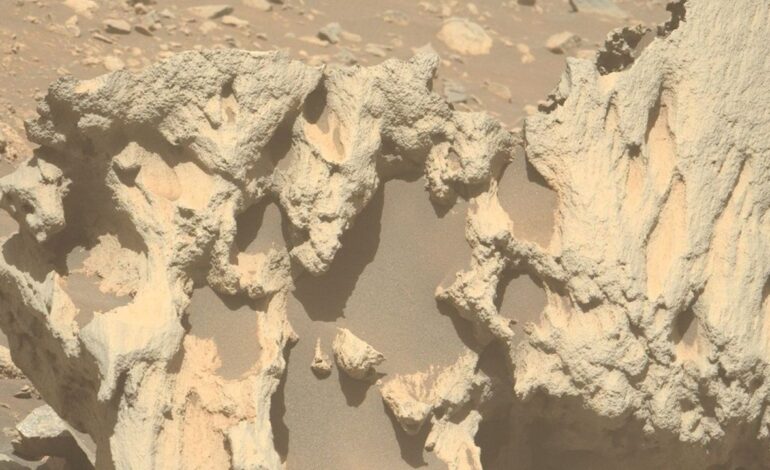NASA’s Perseverance Rover May Have Discovered First Meteorite

NASA’s Perseverance rover has potentially identified its first meteorite on Mars, marking a significant milestone in its ongoing exploration of the Red Planet. The rover detected a distinctively shaped rock, named Phippsaksla, on September 2, 2025, during its mission on Sol 1612, which is a Martian day. This intriguing find was announced in a blog post on November 13 by Candice Bedford, a research scientist at Purdue University.
The unusual rock, measuring approximately 31 inches (or 81 centimeters) in length, was spotted amid a landscape of flatter, fragmented rocks. Using its left Mastcam-Z camera, the rover captured images that prompted further investigation. Subsequent analysis with the SuperCam laser instrument confirmed that the rock is composed of iron and nickel, elements commonly associated with the cores of large asteroids in the solar system.
If verified as a meteorite, this discovery would be a first for Perseverance, which landed on Mars on February 18, 2021. The identification of meteorites is significant as they provide insights into the building blocks of the solar system, which formed approximately 4.5 billion years ago.
The name Phippsaksla is derived from a location in Svalbard, Norway, reflecting the tradition of the Perseverance team to use geographic names for their scientific targets. The site where this rock was found has been designated Vernodden, also named after a place in Svalbard.
While this would be Perseverance’s first suspected meteorite find, it is not the first instance of meteoritic materials being found on Mars. The rover Curiosity, which has been operational since 2012, has discovered several iron-nickel meteorites, including the notable Lebanon meteorite in 2014 and Cacao in 2023, both located in the Gale crater region.
Perseverance’s discovery comes after a year of meticulous examination of the Jezero crater rim. Bedford noted that Jezero is expected to have a higher concentration of meteorites, particularly given its geological similarities to Gale crater, which has a history of meteorite impacts.
The primary mission of the Perseverance rover is to search for signs of past life on Mars and to collect samples for a potential future return to Earth. Recently, NASA reported that the rover detected chemical signatures that suggest interactions between sediment and organic matter. However, conclusive evidence of past life will require the samples to be returned to Earth for comprehensive analysis.
As Perseverance continues its exploration, the potential confirmation of the meteorite Phippsaksla will add a fascinating chapter to our understanding of Mars and its geological history, highlighting the ongoing quest to uncover the mysteries of our neighboring planet.






